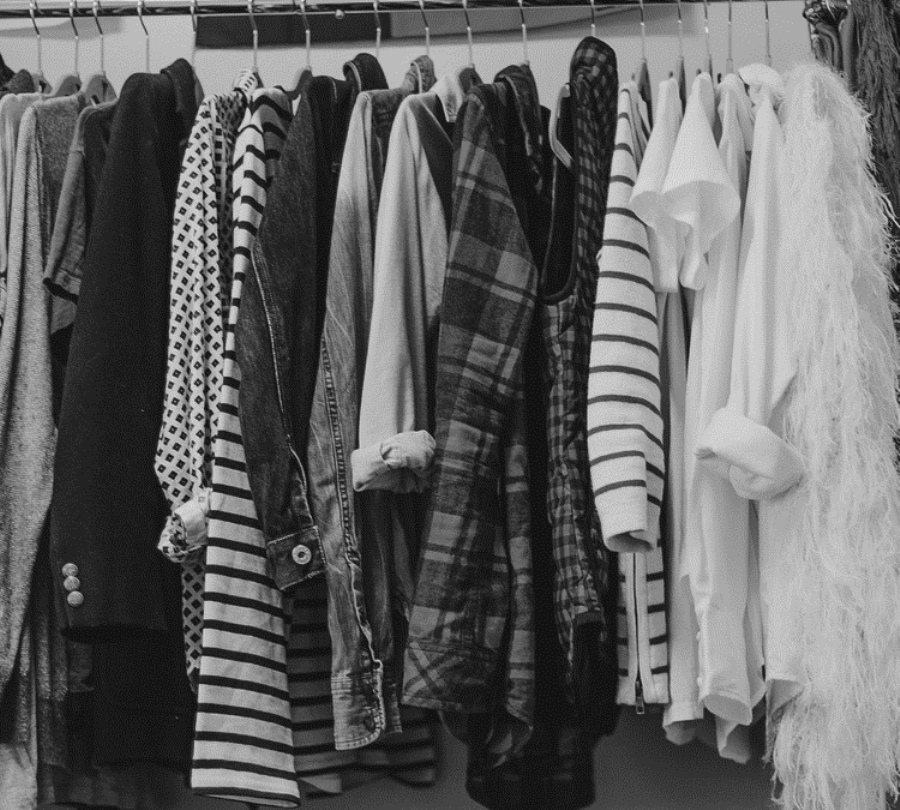Fashion forward: Not all closets are created equal
In college, the idea of fashion often takes a back seat to other factors that loom a bit larger for the future: getting to class on time, making friends, and generally being comfortable. While it is ill advised to judge someone based solely on appearance and what they are wearing, the clothes we choose to spend our money on actually have a far-reaching impact that is often overlooked.
I’m not here to admonish anyone for his or her casual college wardrobe. I don’t praise one form of dressing over another. I enjoy style and fashion, but I concede that there are, ultimately, far more important things to worry about. But I also acknowledge what a privilege it is that we have any choice at all about what to put on our bodies.
The fact that we can roll out of bed and actually decide which random pair of jeans to throw on from the pile of clothing in our respective dorm room floors puts us in the top percent of wealthiest people in the world. In researching this fact, I put my approximate family income, including my own contribution and scholarships, into the global wealth calculator on globalrichlist.com (run by the charity CARE International) and found out that I’m among the top .04% wealthiest people in the world. No wonder I can afford to ponder the ethical solution to problems like fashion.
As staggering of a figure as this is, it reminds me of an important maxim that can be applied to fashion just as much as any aspect of our lives: the fact that we have privilege is important to note, but what matters even more is what we do with it. In the case of fashion, how and where we spend our money is just one step in the solution to the consumerism epidemic.
There are a number of different approaches to becoming a more conscious consumer. Although this can apply to many areas outside of fashion, clothing is something that, whether we like it or not, effects us daily. Perhaps fashion is much less an aesthetic choice for some and they focus on functionality, but there is room to grow in the overall thought process for anyone.
If you want to look at things from an environmental angle, the fashion industry is one of the most polluting industries in the world. Cotton itself accounts for 16% of insecticides used in the world. While polyester is a long-lasting, recyclable synthetic material, many people cite the fact that it is not fully degradable and that it isn’t
“organic” as a decision to avoid it.
Designer Eviana Harman put it best when she told sustainable fashion website Ecouterre that “The origin of a material is only one part of its environmental impact,” she says. “How many times it’s flown around the world before it gets to you, how much water is diverted to grow it…these things all mean that it’s never black and white.”
Some simple environmental solutions include shopping in secondhand stores, having clothing swaps with friends, donating or recycling what you don’t wear anymore, or shopping locally to avoid contributions to a carbon footprint.
One of the biggest factors in sustainability is buying fewer clothes and wearing them longer as opposed to participating in a short lived trend cycle where the clothes get little wear and are thrown out within a few months.
Another factor that can perhaps bolster the notion that what we wear matters is the ethical treatment of laborers that created the garments. One of the biggest fashion industry industries in recent history is the collapse of the Rana Plaza factories in Bangladesh that killed over 1,000 workers. This was a huge wake up call to many people who blindly shopped at popular retailers like J C Penney.
While there are several possible solutions to these problems, a lot of it goes back to simplicity. In a perfect world, there wouldn’t be such a high level of Western demand that created the “need” for laborers in these conditions in the first place. Even prosperous Americans in the 1950s had only a few, likely hand-sewn or American made outfits per season. Although there is certainly a need for activism, which you can contribute to with the help of websites like cleanclothes.org, just taking the time to work on a mental shift from a throwaway wardrobe of Forever 21 clothing to a more thoughtful approach is a big step in the right direction. For someone looking to do a bit of a wardrobe overhaul, some more ethically produced, albeit more expensive, clothing choices are available at new websites such as Zady and Accompany.
My love of style is the reason why I care so much about the wrongdoings of this particular industry. There is already a shift occurring within our generation to support local designers and an ethical approach. To be a part of the solution, one doesn’t need to devote all that much time or effort; rather, simply pausing for a minute to consider the impact of purchases is a powerful step towards change for the better.

